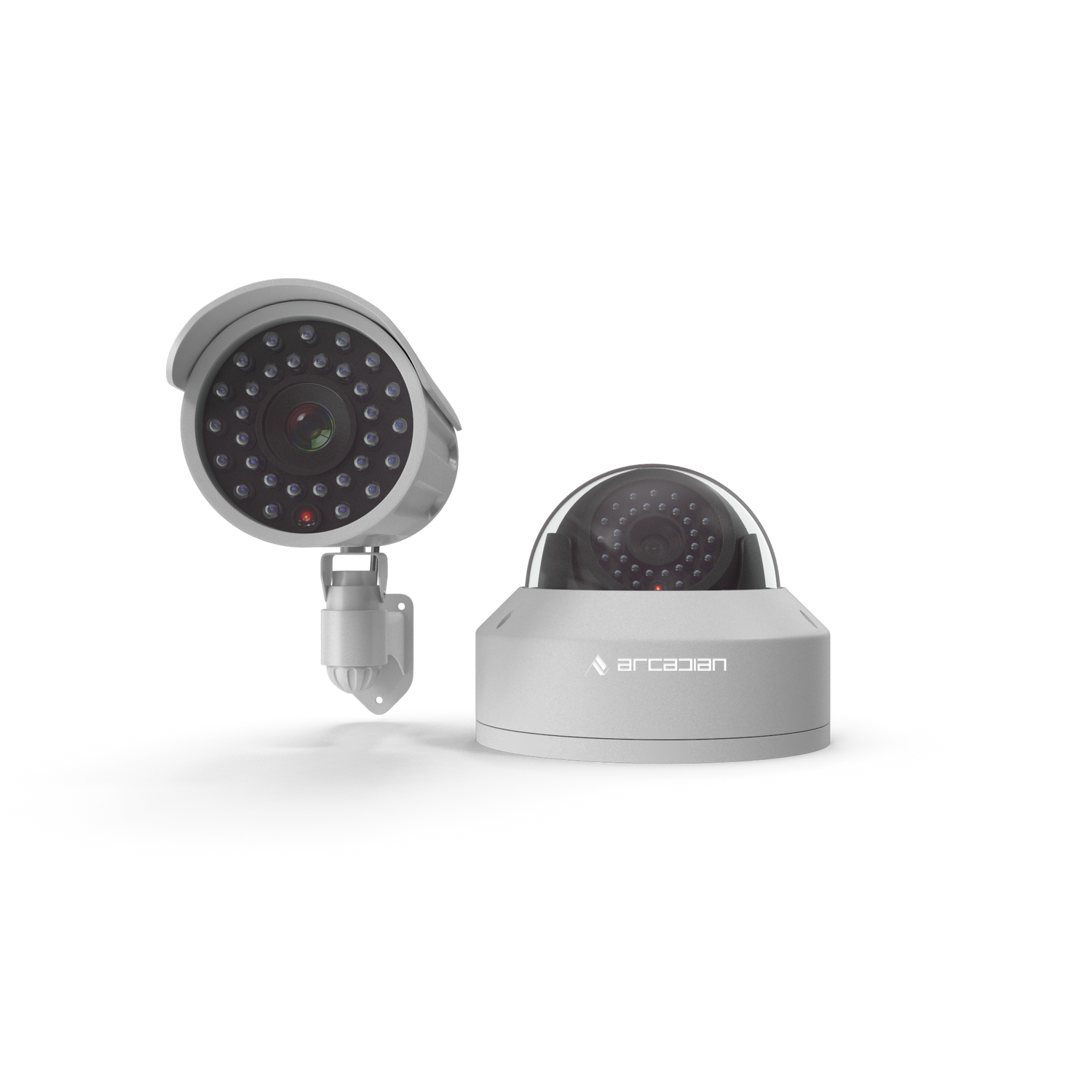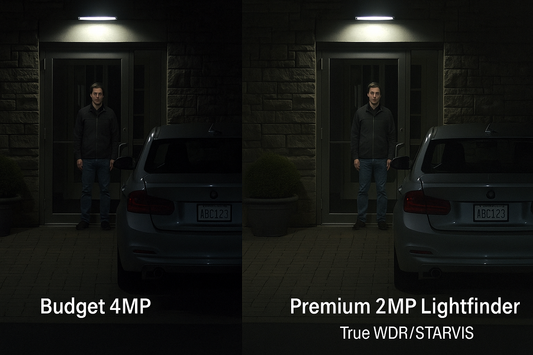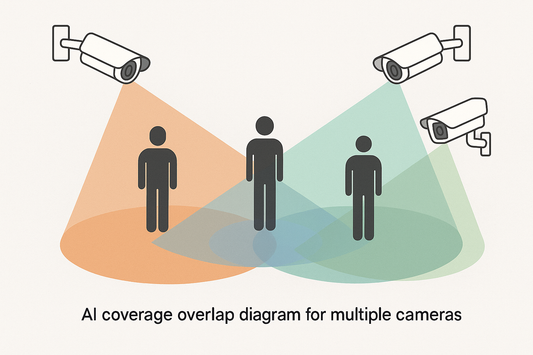NVR/DVR vs. Cloud: The Best Option for Franchises and Multi-Location Businesses
Introduction: Choosing the Right Security System for Scalability and Efficiency For franchises and multi-location businesses, security is more than just protecting one site—it’s about managing multiple locations seamlessly. Network Video Recorder (NVR) systems have long been the traditional choice for video surveillance, but are they the best option for businesses...

Introduction: Choosing the Right Security System for Scalability and Efficiency
For franchises and multi-location businesses, security is more than just protecting one site—it’s about managing multiple locations seamlessly. Network Video Recorder (NVR) systems have long been the traditional choice for video surveillance, but are they the best option for businesses operating at scale?
In this blog, we’ll compare NVR systems with cloud-based security cameras and uncover why cloud solutions are the ideal fit for franchises and multi-location enterprises.
1. Scalability: The Cloud Advantage
NVR Challenges with Multi-Location Businesses:
- Hardware Dependencies: Each location requires its own NVR hardware, leading to significant upfront costs.
- Storage Limitations: Expanding storage capacity often involves replacing or upgrading physical hardware.
- Disjointed Monitoring: Managing separate systems across multiple sites can be inefficient and error-prone.
Why Cloud Systems Excel:
- Centralized Monitoring: Manage all locations from a single dashboard, accessible from anywhere.
- Effortless Expansion: Add cameras to any location without purchasing new hardware or reconfiguring systems.
- Flexible Storage: Cloud systems offer scalable storage options, accommodating growth without additional equipment.
Example:
A franchise with 15 locations saved $50,000 in hardware costs by consolidating its security into a single cloud-based system.
2. Cost Efficiency Over Time
NVR Systems’ Hidden Costs:
- High Upfront Costs: A 10-camera NVR setup can cost $15,000+, including recorders, hard drives, and installation.
- Maintenance Expenses: Repairs, software updates, and hard drive replacements add to long-term costs.
- Scaling Costs: Adding cameras or storage to multiple locations can double or triple initial expenses.
Cloud Systems Save You Money:
- Subscription Model: Starting at $20 per camera per month, cloud systems eliminate large upfront investments.
- No Maintenance Costs: Software updates, repairs, and monitoring are included in the subscription fee.
- Lower Energy Costs: Without on-site hardware, cloud systems consume less power, reducing utility bills.
Cost Comparison Over 5 Years:
| Expense | NVR System | Cloud Cameras |
|---|---|---|
| Upfront Costs | $15,000+ | $1,000 (setup fees only) |
| Maintenance Costs | $5,000+ | $0 |
| Storage Upgrades | $3,000+ | Included |
| Scaling to 5 Locations | $60,000+ | $12,000/year ($200/month/location) |
| Total Costs (5 Years) | $95,000+ | $60,000 |
3. Remote Monitoring and Management
NVR Limitations:
- Local-Only Access: NVR systems require you to be physically on-site or connected through a VPN for access.
- Fragmented Systems: Managing multiple NVRs across locations creates inefficiencies and increases the risk of errors.
- Delayed Responses: Incidents often go unnoticed without real-time alerts, leading to slower responses.
Cloud Convenience:
- Real-Time Access Anywhere: Monitor live feeds and recorded footage from any device, anywhere in the world.
- Smart Alerts: Get instant notifications for unusual activity, ensuring quicker responses.
- Streamlined Management: Oversee all locations from one platform, saving time and reducing complexity.
Example:
A retail chain reduced incident response times by 40% using cloud-based cameras with real-time alerts and centralized monitoring.
4. Security and Data Protection
NVR Vulnerabilities:
- Local Storage Risks: Hard drives in NVR systems are prone to theft, fire, and hardware failures, which can result in lost footage.
- Cybersecurity Weaknesses: Older systems often lack encryption, making them vulnerable to hacking.
- No Disaster Recovery: Once an NVR is compromised, the footage cannot be recovered.
Cloud-Based Protection:
- Redundant Storage: Cloud systems store footage securely across multiple data centers, ensuring no single point of failure.
- Advanced Encryption: End-to-end encryption protects data during transmission and storage.
- Disaster Recovery: Even in the event of physical damage, footage remains accessible from the cloud.
Stat: Businesses using cloud-based security systems experience 50% fewer data breaches compared to those relying on NVR systems (Source: Ponemon Institute).
5. Advanced Features for Better Insights
NVR Systems Lack Analytics:
- Basic Functionality: NVRs are limited to recording footage, offering no analytics or actionable insights.
- Costly Add-Ons: Features like motion detection, facial recognition, and heat mapping require third-party tools.
Cloud Cameras with Built-In AI:
- AI Analytics: Detect suspicious behavior, monitor customer traffic, and analyze operational trends in real time.
- Smart Alerts: Receive notifications for loitering, unauthorized access, or other security threats.
- Operational Insights: Optimize staffing, improve layouts, and track customer flow with advanced analytics.
Example:
A restaurant franchise using cloud analytics reduced shrinkage by 20% and increased operational efficiency by 15% in one year.
6. Sustainability and Energy Efficiency
NVR Systems Are Resource-Heavy:
- High Energy Consumption: Constantly running NVRs and hard drives consume significant electricity.
- Frequent Hardware Replacements: Outdated systems contribute to e-waste.
Cloud Solutions Are Eco-Friendly:
- Energy Efficient: Cloud cameras eliminate the need for on-site recording hardware, reducing power usage.
- Longer Lifespan: Software-driven updates extend the usability of cloud systems, minimizing waste.
Stat: Businesses switching to cloud systems reduce energy consumption by 30% (Source: Energy Star).
7. The Future of Franchise Security
Why Franchises Need the Cloud:
- Seamless Expansion: As your business grows, cloud systems grow with you—no costly hardware overhauls required.
- Centralized Control: Manage security for multiple locations from a single platform, reducing administrative overhead.
- Future-Proof Technology: Stay ahead with automatic updates, AI advancements, and integration capabilities.
Example:
A franchise with 25 locations scaled their cloud-based system effortlessly, saving $100,000 in potential hardware and upgrade costs over five years.
Conclusion: Cloud Cameras Are the Smart Choice for Franchises
For multi-location businesses and franchises, cloud-based security cameras outpace traditional NVR systems in scalability, cost efficiency, and advanced features. By switching to the cloud, businesses can reduce costs, improve operational efficiency, and ensure reliable, real-time security monitoring.
Ready to upgrade your security?
👉 Contact Arcadian.ai today to discover how cloud solutions can transform your franchise’s security strategy.
Visit Us on Social Media
💼 LinkedIn
🌐 Facebook
📸 Instagram
🎥 YouTube
🎬 TikTok
🐦 X

Security is like insurance—until you need it, you don’t think about it.
But when something goes wrong? Break-ins, theft, liability claims—suddenly, it’s all you think about.
ArcadianAI upgrades your security to the AI era—no new hardware, no sky-high costs, just smart protection that works.
→ Stop security incidents before they happen
→ Cut security costs without cutting corners
→ Run your business without the worry
Because the best security isn’t reactive—it’s proactive.







